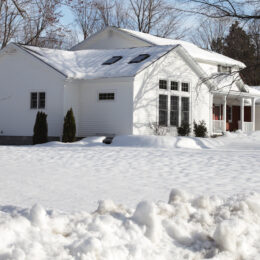
When looking for a new car, most folks at least glance at the estimated fuel efficiency on the window sticker. Finding out the estimated energy costs for a new home is also important, but those numbers may be trickier to find.
The type of energy — electricity and propane or gas — used in the home and how it’s used, coupled with the efficiency of the installed appliances, are significant expenses for any home. For the average home, energy expenses total approximately $2,500 per year.
The kind of new home you want can have a strong influence on energy performance. As square footage increases, lighting requirements increase, and more importantly, the burden on heating and cooling equipment increases.
In general, newer homes have better energy performance due to more stringent building codes, but buying a new home does not guarantee efficiency. Building codes are not always enforced, and a minimum-code home is not nearly as efficient as homes built to a higher standard. For example, if energy efficiency or green features are a high priority, look for homes that have ENERGY STAR or Leadership in Energy and Environmental Design (LEED) certifications. Indiana’s electric cooperatives offer the Touchstone Energy Home Program which can take that efficiency even higher.
Once you are interested in a specific home, request electricity, natural gas or propane bills from the sellers of an existing home so that you can estimate how much it will cost to heat and cool the home annually.
Still, this is not a precise measure of home energy performance. The Home Energy Rating System (HERS) Index is like a “miles per gallon” rating for a home that allows consumers to comparison-shop based on energy performance, similar to the way they can comparison-shop for cars. A certified RESNET Home Energy Rater will need to inspect the home and develop a HERS rating. This rating can be done during the inspection process, or you may request a HERS rating from the seller.
Since heating and cooling systems consume about half of a home’s energy use and are costly to replace, here are a couple questions homebuyers should consider about heating and cooling:
• How old is the heating system? If the home’s heating system is more than 10 years old, it may be necessary to replace it in the near-term.
• What is the seasonal energy efficiency rating (SEER)? If the air conditioner has a SEER of less than 8, you will likely want to replace it.
A home’s building envelope insulates the home’s interior from the outdoor environment and includes features like doors, walls and the roof. Make sure the R-value, the thermal resistance measurement used for insulation, meets the recommended R-value for homes in your region.
If you determine energy investments are necessary, call your electric cooperative. Many electric co-ops can assist with energy audits and offer incentives for energy efficient heating and cooling equipment. — Source: NRECA



